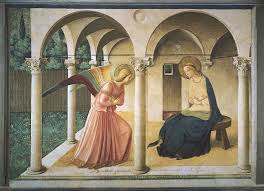Stamp: The Meeting between Leo the Great and Attila; Stanza di Eli… (Ajman 1972)
The Meeting between Leo the Great and Attila; Stanza di Eli… (Ajman 1972)
15 August (Ajman ) within release Frescoes by Raphael (III) goes into circulation Stamp The Meeting between Leo the Great and Attila; Stanza di Eli… face value 1 United Arab Emirates riyal
| Stamp The Meeting between Leo the Great and Attila; Stanza di Eli… in catalogues | |
|---|---|
| Michel: | Mi: AJ 1888B |
| Colnect codes: | Col: AJ 1972.08.15-081b |
Stamp is horizontal format.
Also in the issue Frescoes by Raphael (III):
- Se-tenant - Frescoes by Raphael - se-tenant face value 9;
- Se-tenant - Frescoes by Raphael - se-tenant face value 9;
- Stamp - La Disputa; Stanza della Segnatura face value 2;
- Stamp - The Battle of Ostia; Stanza dell Incendio di Borgo face value 1.25;
- Stamp - The Expulsion of Heliodorus from the temple; Stanza di Elio… face value 1.50;
- Souvenir Sheet - The Mass at Bolsena; Stanza di Eliodoro face value 2.50;
- Stamp - The Mass at Bolsena; Stanza di Eliodoro face value 2.50;
- Stamp - The Meeting between Leo the Great and Attila; Stanza di Eli… face value 1;
- Stamp - The Parnassus; Stanza della Sagnatura, Vatican Palace face value 75;
Stamp The Meeting between Leo the Great and Attila; Stanza di Eli… it reflects the thematic directions:
Fresco (pl. frescos or frescoes) is a technique of mural painting executed upon freshly laid ("wet") lime plaster. Water is used as the vehicle for the dry-powder pigment to merge with the plaster, and with the setting of the plaster, the painting becomes an integral part of the wall. The word fresco (Italian: affresco) is derived from the Italian adjective fresco meaning "fresh", and may thus be contrasted with fresco-secco or secco mural painting techniques, which are applied to dried plaster, to supplement painting in fresco. The fresco technique has been employed since antiquity and is closely associated with Italian Renaissance painting.
The horse (Equus ferus caballus) is one of two extant subspecies of Equus ferus. It is an odd-toed ungulate mammal belonging to the taxonomic family Equidae. The horse has evolved over the past 45 to 55 million years from a small multi-toed creature, Eohippus, into the large, single-toed animal of today. Humans began to domesticate horses around 4000 BC, and their domestication is believed to have been widespread by 3000 BC. Horses in the subspecies caballus are domesticated, although some domesticated populations live in the wild as feral horses. These feral populations are not true wild horses, as this term is used to describe horses that have never been domesticated, such as the endangered Przewalski's horse, a separate subspecies, and the only remaining true wild horse. There is an extensive, specialized vocabulary used to describe equine-related concepts, covering everything from anatomy to life stages, size, colors, markings, breeds, locomotion, and behavior.

